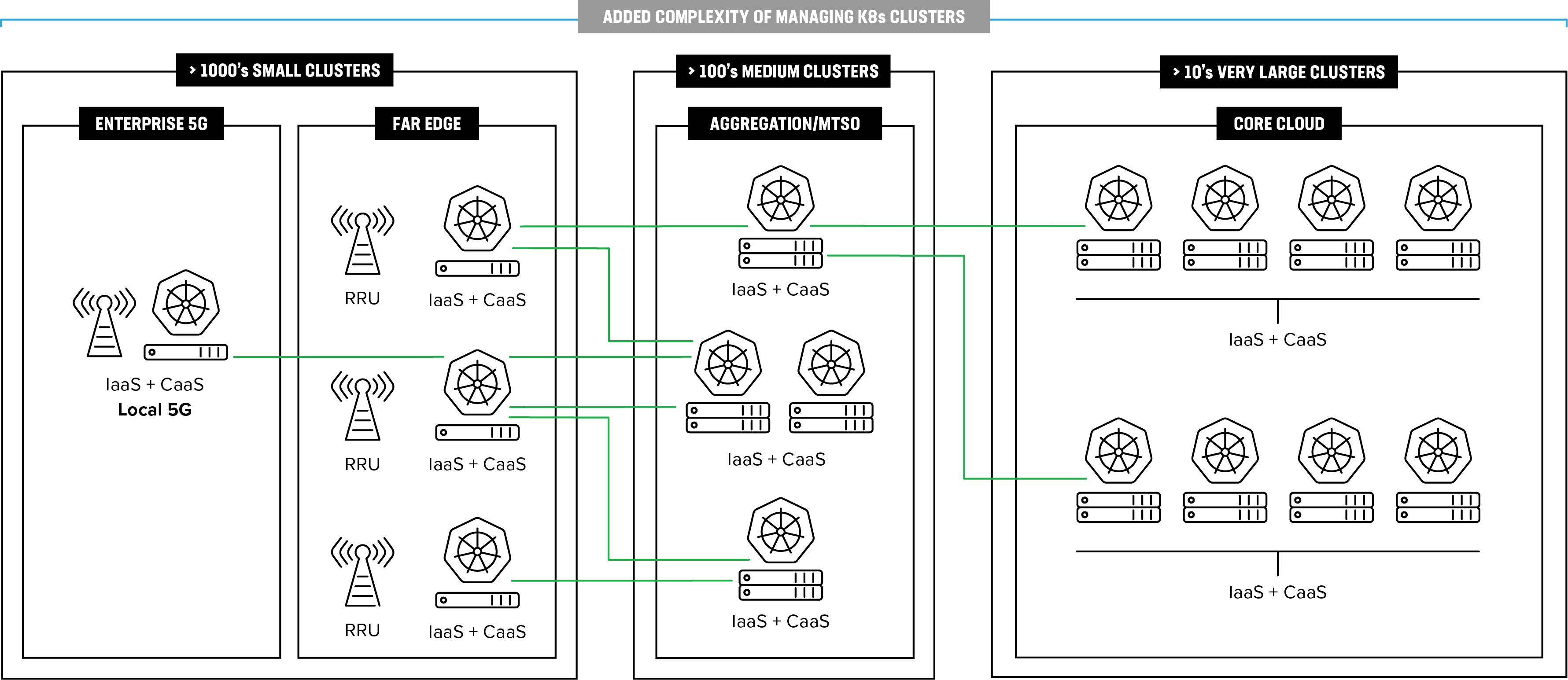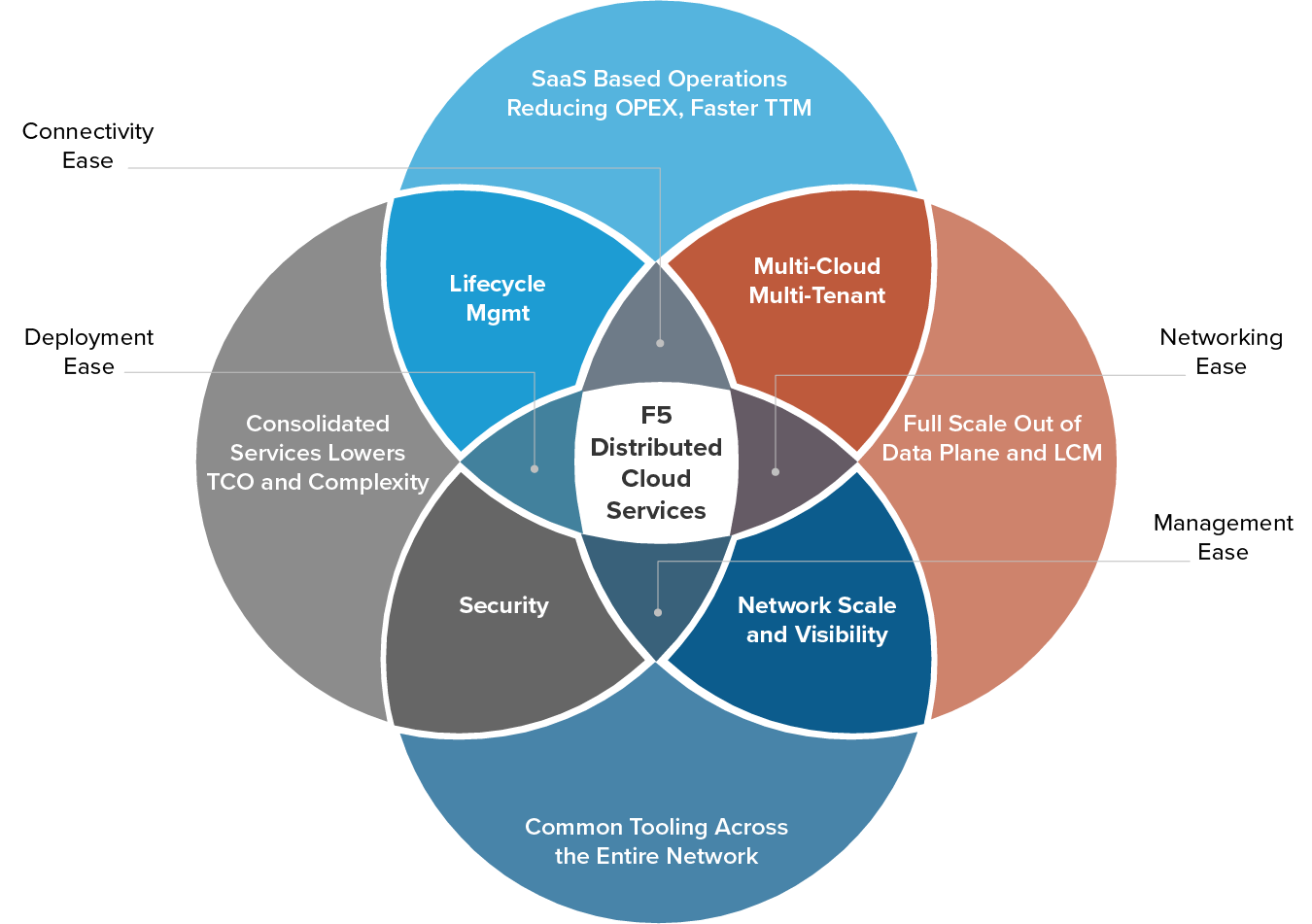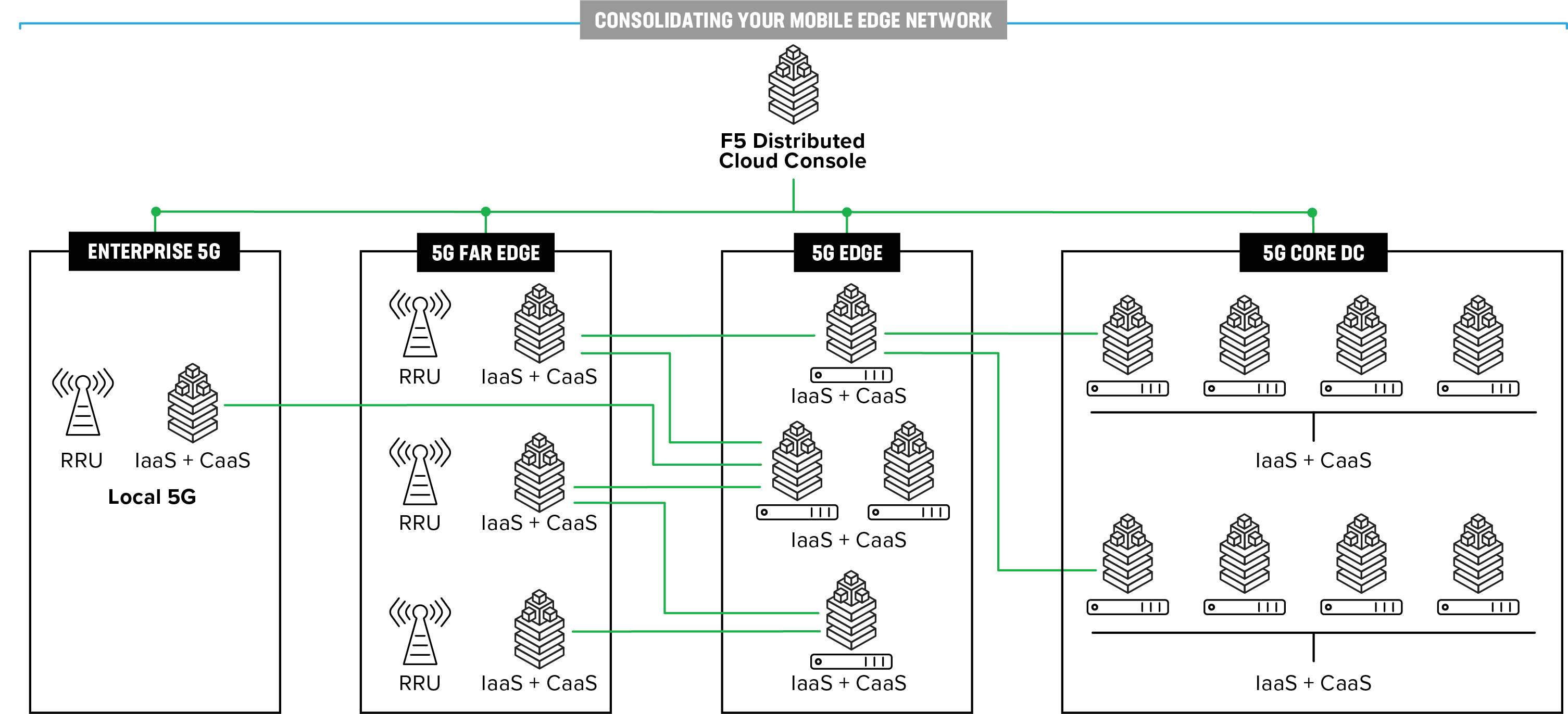Edge-a-nomics: Cómo monetizar su red 5G Edge
Cree servicios empresariales diferenciados con la convergencia 5G de las nubes de TI y telecomunicaciones
A medida que las implementaciones de 5G se vuelven más generalizadas, persiste una pregunta subyacente: ¿Cómo podrás monetizar tus inversiones? Con la convergencia de la industria, el negocio 5G estará liderado por las empresas y el edge desempeñará un papel importante. Los proveedores de servicios necesitarán estrategias de borde modernas no solo para atraer a diferentes verticales empresariales, sino también para cumplir la promesa de 5G: mayor ancho de banda y menor latencia cerca de los usuarios finales. El final del juego está un poco en el foco, pero ¿cómo llegarás allí? En un informe de IDG , el 86% de los proveedores de servicios consideran que integrar una solución de edge computing es extremadamente desafiante. Dado que el campo de juego está relativamente nivelado, ¿cuál será su diferenciador clave? ¿Cómo puedes sacar al mercado nuevas ofertas de servicios más rápidamente? ¿Cómo puede reducir su TCO y gestionar la mayor complejidad que implica la red multicloud distribuida de 5G? Echemos un vistazo más de cerca...
Transformación digital en marcha: convergencia de las nubes de TI y telecomunicaciones
Veamos primero la transformación digital y cómo ésta afectará las formas en que se puede monetizar su red. La transformación digital está impulsada por una arquitectura basada en servicios y nativa de la nube, que ha generado un cambio de paradigma que permite a los proveedores de servicios migrar de una implementación de pila vertical a una horizontal. La migración a este enfoque le permite evitar la dependencia de un proveedor, disminuir la complejidad y aumentar la visibilidad dentro de la red, además de proporcionar coherencia entre los sitios centrales, de borde cercano y de borde lejano.
Pasar a este enfoque de pila horizontal permite escalar los sitios de borde según sea necesario para las empresas a las que sirven. Ahora es posible implementar aplicaciones y funciones en centros de datos distribuidos en el borde de la red, lo que proporciona una plataforma para aplicaciones y servicios modernos. Los proveedores de servicios ahora pueden realizar la transición de sus redes existentes a un ecosistema híbrido, multicloud y distribuido, diseñado para la agilidad y que permite que los servicios de nube de borde funcionen a una escala ilimitada.
La nueva infraestructura tecnológica necesaria para 5G, edge computing y multicloud híbrido está siendo impulsada por la convergencia de sistemas de telecomunicaciones, TI y B2B. Esto representa un nuevo modelo informático capaz de transformar una amplia gama de industrias y crea el potencial para servicios comerciales transformadores para verticales industriales en un ecosistema híbrido distribuido de múltiples nubes.
Cuatro desafíos clave del 5G Edge
Examinemos algunos desafíos críticos que amenazan la economía de las implementaciones de múltiples nubes y de borde a medida que los proveedores de servicios se preparan para permitir una mayor agilidad comercial con la convergencia de los sistemas de telecomunicaciones, TI y B2B.
(1) Con la arquitectura distribuida de 5G surge la necesidad de reducir la complejidad de implementar, administrar y mantener la gestión del ciclo de vida de decenas de miles de clústeres de Kubernetes, incluida la proliferación de conjuntos de herramientas necesarios para administrarlos. Junto con las capacidades de escalabilidad que requiere 5G, los proveedores de servicios ahora deben soportar tanto las funciones de red virtual (VNF) como las funciones nativas de la nube (CNF) a medida que realizan la transición de 4G a 5G. Tener múltiples pilas de nubes VNF y CNF para soportar hace que administrar redes sea cada vez más difícil. Por ejemplo, ¿cómo gestiona los KPI y las actualizaciones, supervisa la capacidad y mueve cargas de trabajo o crea cargas de trabajo en el borde?
(2) Algunas implementaciones de red existentes tendrán entornos Kubernetes aislados, que se basan en implementaciones de pilas verticales virtualizadas específicas. El enfoque de pila vertical hace que sea cada vez más difícil implementar múltiples servicios digitales y soportar cargas de trabajo que se pueden instanciar y administrar fácilmente (por ejemplo, juegos, fabricación, IoT y tecnología financiera, por nombrar algunos). Tener una red basada en implementaciones de pila vertical también reduce la seguridad de su red, ya que ahora necesita confiar en que los proveedores individuales habiliten su propio cifrado de Kubernetes.
(3) Operar su red ahora se ha vuelto mucho más complicado debido a que varios proveedores incorporan sus sistemas operativos a la combinación, lo que provoca que los costos de operación de la red aumenten con cada proveedor. ¿Cómo mantener una gestión adecuada del ciclo de vida en una red de múltiples proveedores y múltiples inquilinos sin afectar la calidad de la experiencia (QoE) de los usuarios finales? Lo más importante es mantener la visibilidad de su red con un conjunto de herramientas común necesario para administrar y mantener toda la red de extremo a extremo.
(4) La parte crucial de una red 5G es la capacidad de escalar según sea necesario para reasignar capacidad de una aplicación a otra, junto con la capacidad de adaptarse a casos de uso o aplicaciones de borde empresarial. El escalamiento sólo puede llevarse a cabo con éxito si existe una plataforma común.
Puede encontrar una descripción detallada de las amenazas a la seguridad perimetral en el Panorama de amenazas para proveedores de servicios 2021.
¿Cómo monetizar mejor sus inversiones?
Disponer de una única plataforma para construir, unir, proteger y escalar su red desde el núcleo hasta el borde es crucial para minimizar las complejidades de una red distribuida de múltiples proveedores, múltiples nubes y múltiples inquilinos. Nuestra solución basada en SaaS F5 Distributed Cloud ofrece a los proveedores de servicios una única plataforma para conectar, proteger y observar aplicaciones implementadas en múltiples nubes. Tener un plano de control centralizado con un plano de datos de escalamiento total le permite implementar aplicaciones empresariales con solo hacer clic en un botón.
Disponer de una única plataforma para gestionar todas sus aplicaciones distribuidas desde el centro de datos central hasta el borde cercano, el borde lejano y el borde empresarial al ofrecer Edge-as-a-Service (EaaS) es un aspecto fundamental para monetizar su red. Puede conectar y compartir sin problemas cargas de trabajo en entornos distribuidos de múltiples proveedores de nube pública y privada y en el borde, lo que brinda a los usuarios finales una calidad de experiencia incomparable y simplifica las operaciones con una oferta de servicios administrados. Los servicios de nube distribuida de F5 ofrecen su propia isla privada, lo que permite total privacidad y soberanía de los datos.
Permitir la gestión con visibilidad y control operativo es vital en entornos multi-nube con múltiples proveedores e inquilinos. Necesitará implementar, administrar y actualizar decenas de miles de clústeres de Kubernetes y, al mismo tiempo, garantizar la coherencia del acceso a la identidad, las políticas y la seguridad en todos los clústeres. La escalabilidad y el soporte de la gestión completa del ciclo de vida son cruciales a medida que aumenta la complejidad de la red. Los servicios de nube distribuida reducen los gastos operativos, disminuyen el tiempo de comercialización y reducen la complejidad de la red al consolidar servicios y ofrecer un único panel para administrar y controlar su red.
Los servicios de nube distribuidos pueden crear un IaaS o contenedores como servicio (CaaS) y pueden funcionar sobre un IaaS existente. No es necesario desmontar y reemplazar la infraestructura existente, ya que los servicios de nube distribuida se pueden adaptar a arquitecturas existentes para permitir la integración con facilidad.
Con la convergencia de TI y nubes de telecomunicaciones, ahora puede ofrecer EaaS como parte de su oferta de servicios administrados a sus clientes empresariales para brindar visibilidad completa de todas las implementaciones de borde, lo que le permite monetizar completamente sus inversiones y, al mismo tiempo, simplificar las operaciones.
CONCLUSIÓN
La implementación de 5G y la edge computing debe simplificarse en términos de implementaciones y operaciones. Sin embargo, con F5 Distributed Cloud Services, implementar EaaS no tiene por qué ser un desafío ni una complejidad. Los servicios de nube distribuida proporcionan servicios de seguridad de aplicación y redes de extremo a extremo en entornos de nube distribuida, lo que simplifica la implementación y las operaciones de aplicaciones distribuidas. La facilidad de construir, unir, proteger y escalar su red con servicios de nube distribuida le permite adaptarse sin problemas a la convergencia de la nube de telecomunicaciones y TI, extendiendo su nube de telecomunicaciones hasta el borde empresarial para respaldar industrias más amplias e impulsar mayores innovaciones.



